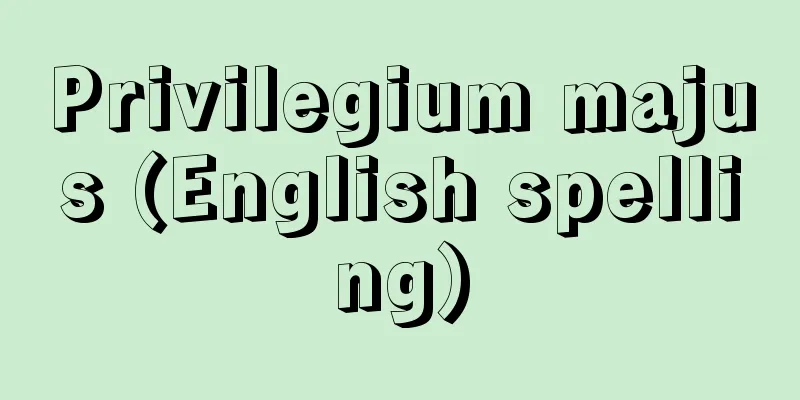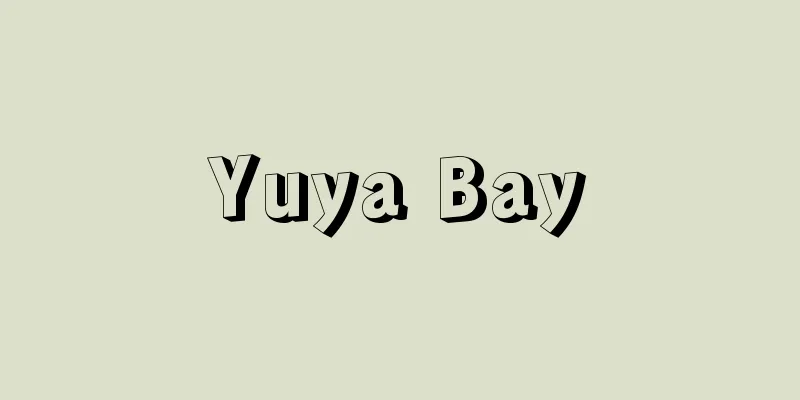Appeal - Kouso

|
In procedural law, this is a type of appeal that requests a higher court to review an undecided trial. [Yoshinobu Homma] Appeals in civil casesAn appeal is an appeal against a final judgment of the first instance. A party who has received an unfavorable judgment in the first instance appeals the judgment to a higher court (appellate court) seeking to have it set aside. The appeal here must be against the judgment in the main text of the judgment (i.e. the judgment on the claim), and therefore an appeal cannot be made if there is only an objection to the reasons for the judgment. Furthermore, an appeal cannot be made simply because there is subjective objection; an appeal can only be made when the party compares what they have requested from the court (the petition on the merits) with the judgment and the latter is more disadvantageous to the party than the former (formal objection). In the appeal court, the validity of the first instance judgment is reviewed in terms of both fact-finding and application of law, and the case is re-examined. It is called a trial of fact because it reviews the facts (different from an appeal, which is a trial of law). In the trial of fact, the appellate court reviews the validity of the first instance judgment based on the litigation materials from the first instance (the parties state the results of the oral arguments in the first instance, and the litigation actions taken in the first instance are effective in the appeal court - Civil Procedure Law, Article 296, Paragraph 2 and Article 298, Paragraph 1), and also adds new materials (the presentation of attack and defense methods must be made within the period set by the court, and the party who takes litigation actions after this period must explain the reasons to the court) (this is called the principle of continuity of proceedings). If the original judgment is changed in the appeal court, it can only be done to the extent of the appeal, and a judgment that is more disadvantageous to the appellant than the original judgment cannot be made (Civil Procedure Law, Article 304 - called the principle of prohibition of unfavorable changes). Therefore, oral arguments will be held to the extent that there is an appeal (Article 296, Paragraph 1 of the same Act). If both the plaintiff and the defendant appeal, the principle of prohibition of adverse changes does not apply. The appellate court is the district court for the judgment of a summary court, and the high court for the judgment of a district court. An appeal is made by submitting a notice of appeal to the original court (the court of first instance) within two weeks of the service of the judgment to the parties. If the appeal is illegal and the deficiencies cannot be corrected (for example, an appeal filed after the appeal period has expired), the court of first instance must dismiss the appeal by decision. Also, if the appeal is illegal and the deficiencies cannot be corrected, the appellate court may dismiss the appeal by decision without oral argument. If the court has ordered the prepayment of the costs necessary for the summons but has not received it, it may dismiss the appeal by decision. The effect of filing an appeal is to block the finality of the original judgment and to transfer the case to the appellate court. These effects apply to the entire original judgment. After the original judgment is rendered, the parties may waive their right to appeal, and even after filing an appeal, they may withdraw the appeal at any time up until the rendering of the final judgment of the appellate court. If both parties are absent from the oral argument hearing or pretrial hearing, or if they attend but leave without saying anything and do not request a date within one month, the suit is deemed to have been withdrawn. The same treatment applies if both parties do the same thing twice in a row (Civil Procedure Act, Articles 292, Paragraph 2 and 263). If the appeal is withdrawn within the appeal period, it is possible to file an appeal again within the period, but if an appeal is not filed within the appeal period or is withdrawn after that, the original judgment (first instance judgment) will become final. [Yoshinobu Homma] Appeals in criminal casesThis refers to an appeal against a first instance judgment. Either the prosecutor or the defendant can file an appeal, but it is necessary to claim that the first instance judgment has legal defects (grounds for appeal such as a violation of legal procedures in the way the trial was conducted, a misinterpretation and application of the law, or a misapprehension of facts; Articles 377 to 384 of the Code of Criminal Procedure) and to request that it be set aside. Appeals in criminal cases adopt a post-trial review system, in which the validity of the original judgment is examined based on the legal materials submitted in the first instance. However, since factual errors and inappropriate sentences are also grounds for appeal (Criminal Procedure Code, Articles 381 and 382), the examination of new facts and new evidence is permitted (Criminal Procedure Code, Article 393), so this can be said to be a modified post-trial review system. In addition, the principle of prohibiting adverse changes is also recognized in criminal cases (Criminal Procedure Code, Article 402). The Court of Appeal is a high court that can appeal against any judgment of a summary court, a district court, or a family court. An appeal can be made by filing a petition with the court of first instance within 14 days from the date of notice of the judgment. In principle, the prosecutor or the defendant may abandon or withdraw an appeal (appeals against sentences of the death penalty, life imprisonment or incarceration cannot be abandoned). In this case, no further appeal may be made. [Yoshinobu Homma] [Reference] | | | | | |Source: Shogakukan Encyclopedia Nipponica About Encyclopedia Nipponica Information | Legend |
|
訴訟法上、未確定の裁判について、上級裁判所にその再審査を求める不服申立てである上訴の一種。 [本間義信] 民事訴訟における控訴第一審の終局判決に対する上訴をいう。第一審で不利益な判決を受けた当事者が、これを不服として上級裁判所(控訴裁判所)に、その取消しを求めて行う。ここでいう不服とは、判決主文中の判断(したがって請求についての判断)に対するものでなければならず、したがって、判決の理由のみに不服がある場合には控訴できない。また、主観的に不服があるというだけでは控訴できず、裁判所に要求したもの(本案の申立て)とそれに対する判決とを比較して、後者が前者より当事者にとって不利益であるときに、不服が認められる(形式的不服)。 控訴審では、第一審判決の当否を、事実認定と法律適用の両面で審理し、事件を再審理する。事実審理をする点で事実審といわれる(法律審たる上告とは異なる)。事実審理については、控訴審は第一審での訴訟資料を基礎としながら(したがって、当事者は第一審における口頭弁論の結果を陳述し、第一審においてなした訴訟行為は、控訴審においても効力を有する――民事訴訟法296条2項・298条1項)、さらに新たな資料も加えて(攻撃防御方法の提出等は、裁判所の定める期間内にせねばならず、これを経過してから訴訟行為をする当事者は、裁判所に対し、その理由を説明しなければならない)第一審判決の当否を審査する(これを続審主義という)。控訴審で原判決を変更する場合には、不服申立ての限度においてのみ、これをなすことができ、控訴人にとって原判決以上に不利な判決をなすことができない(同法304条――不利益変更禁止の原則という)。したがって、口頭弁論も不服申立ての限度で行われる(同法296条1項)。原告・被告双方から控訴がなされれば、不利益変更禁止の原則は適用されない。 控訴裁判所は、簡易裁判所の判決に対しては地方裁判所、地方裁判所の判決に対しては高等裁判所である。控訴は、判決の当事者への送達より2週間以内に、控訴状を原裁判所(第一審裁判所)へ提出することによって行う。控訴が不適法でその不備を補正できないことが明らかな場合(たとえば控訴期間が過ぎてから提起された控訴)には、第一審裁判所は、決定で、控訴を却下しなければならない。また、控訴が不適法でその不備を補正できないときは、控訴裁判所が、口頭弁論を経ないで、判決で、控訴を却下できる。期日の呼出しに必要な費用の予納を命じたのにそれがない場合は、控訴裁判所は、決定で、控訴を却下することができる。控訴の提起の効果として、原判決の確定が遮断され、当該事件について控訴審への移審の効力が生ずる。これらの効果は原判決全部について生ずる。 原判決の言渡し後であれば、当事者は控訴権を放棄できるし、控訴提起後も、控訴審の終局判決の言渡しまでは、いつでも控訴の取下げが可能である。当事者双方が口頭弁論期日あるいは弁論準備手続期日に欠席した場合、もしくは、出席はしたが何も述べないで帰った場合で1か月以内に期日指定の申立てをしないときは、訴えの取下げがあったものとみなされる。当事者双方が連続して2回同様のことをしたときも同じ扱いになる(民事訴訟法292条2項・263条)。控訴期間内に取り下げられた場合には、期間内に再度控訴の提起が可能であるが、控訴期間内に控訴の申立てをしない、あるいは、その後に取り下げられた場合には、原判決(第一審判決)が確定することになる。 [本間義信] 刑事訴訟における控訴第一審判決に対する上訴をいう。控訴の提起は、検察官、被告人いずれの側からもできるが、第一審判決に法で定める瑕疵(かし)(裁判のやり方に法律が定める手続違反、法律の解釈適用の誤り、事実誤認があるなどの控訴理由。刑事訴訟法377条~384条)があることを主張し、その破棄を求めることが必要である。 刑事訴訟の控訴審は、第一審で提出された訴訟資料を基礎として、原判決の内容の当否を審査する事後審制を採用している。しかし、事実誤認、刑の量定不当も控訴理由となっていること(刑事訴訟法381条・382条)から、新事実、新証拠の取調べも認められている(同法393条)ので、修正された事後審制といえよう。また、刑事訴訟においても、不利益変更禁止の原則が認められている(同法402条)。 控訴裁判所は、簡易裁判所、地方裁判所、家庭裁判所のいずれの判決に対しても高等裁判所である。控訴は、裁判告知の日から14日以内に申立書を第一審裁判所に提出して行う。 検察官または被告人等は控訴の放棄・取下げを原則としてすることができる(死刑、無期の懲役または禁固の判決に対する控訴は放棄できない)。この場合は、さらに控訴することができない。 [本間義信] [参照項目] | | | | | |出典 小学館 日本大百科全書(ニッポニカ)日本大百科全書(ニッポニカ)について 情報 | 凡例 |
Recommend
Kitazawa Koto
...In a broader sense, it is a common or general ...
Harmodios (English spelling)
? - 514 BCE An ancient Athenian. A beautiful young...
Agency for Cultural Affairs
An external bureau of the Ministry of Education, ...
Silver-haired Yamabe - Ginke Yamabe
… Yamame can be broadly divided into river, lake ...
Lusitania (passenger ship) (English name) Lusitania
…It was a four-shaft ship with a length of 231.6m...
Manda China (English spelling)
…There are many prehistoric rock paintings. The m...
Aptitude
The adaptability of an individual that should be t...
Odessa (English spelling)
The capital of Odessa Oblast in southern Ukraine. ...
Telamōn (English spelling) Telamon
…son of Aiakos, king of Aegina; brother of Telamo...
Imām al‐Haramayn
1028‐85 An Ash'ari Islamic theologian and a Sh...
Rhododendron tschonoskii (English spelling) Rhododendrontschonoskii
…[Yoshiharu Iijima]. … *Some of the terminology t...
Red-necked star beetle - Red-necked star beetle
...The dorsal surface of each abdominal segment i...
Yoshu Kiln
Located in Huangbao Town, Tongchuan City, Shaanxi ...
Sendai Bay
An inlet facing the Pacific Ocean stretching from...
Telephone - denwa (English)
A type of telecommunications. It is a means of co...



![Omachi [town] - Omachi](/upload/images/67cb183420ed0.webp)





